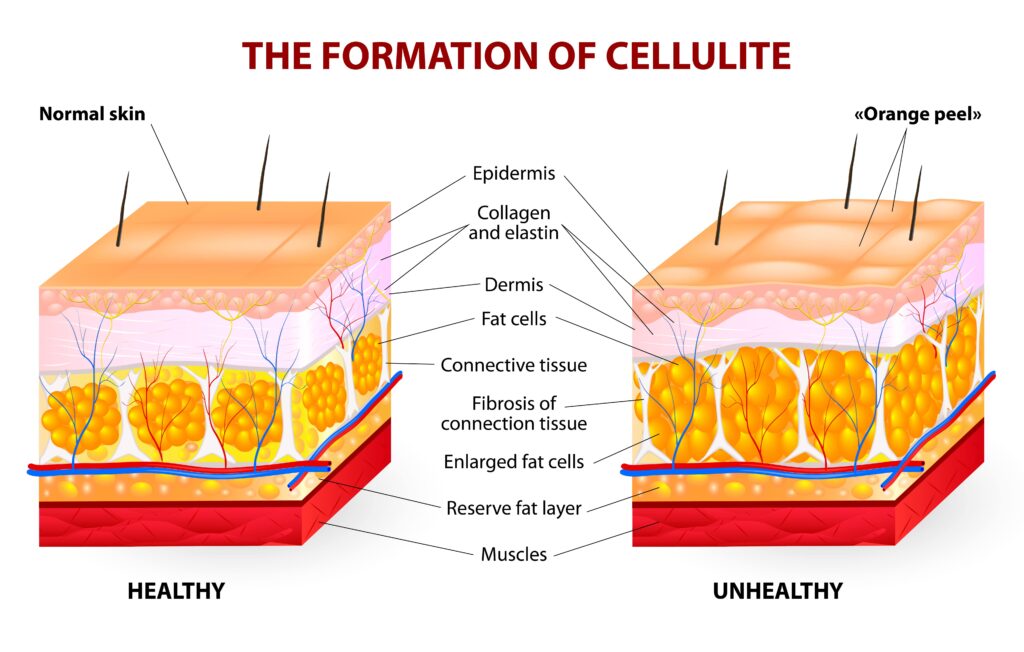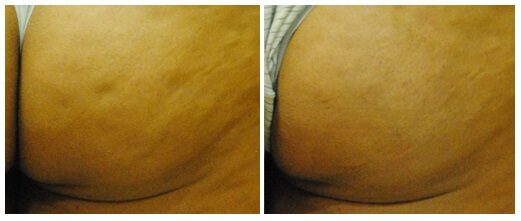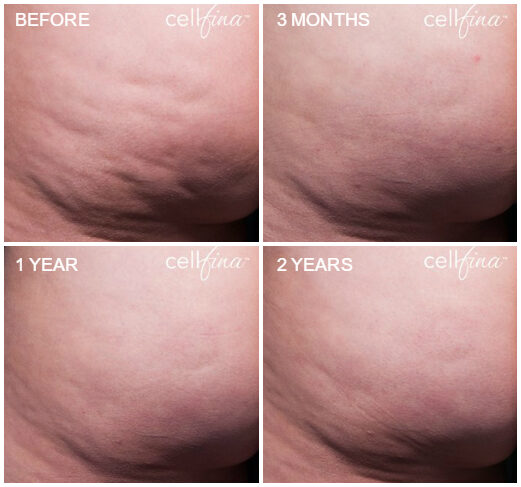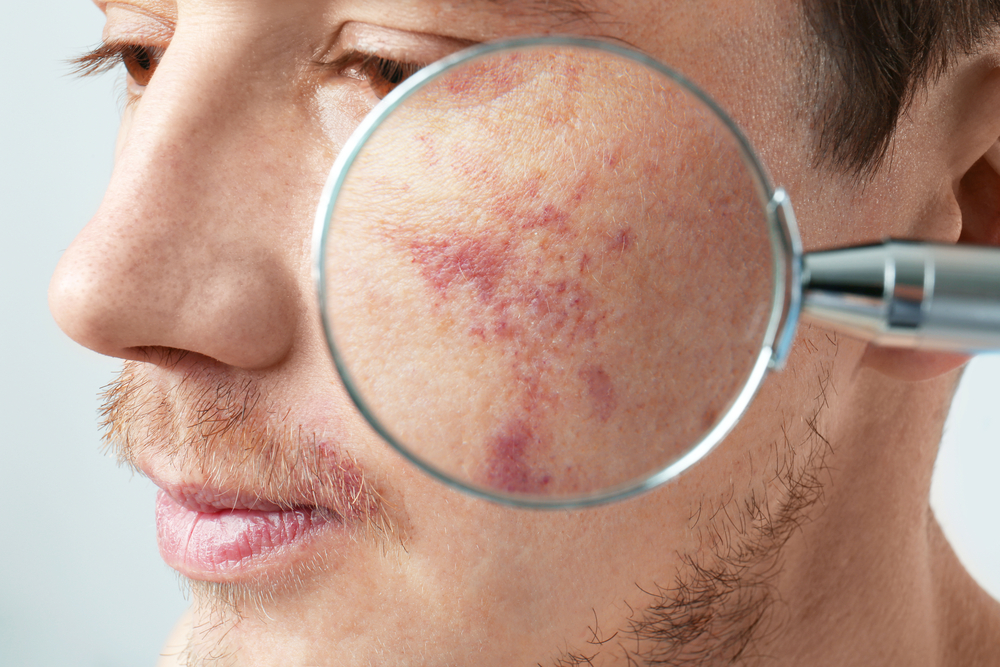Cellulite is one of the most common aesthetic concerns among women of all ages, and while many products and procedures advertise their remarkable results in combating the condition, few live up to their promises.
We asked five board-certified skin care specialists which cellulite removal treatments they believe to be the most effective – and which ones should be avoided.

What Causes Cellulite?
Although the causes of cellulite are not well understood, there are several factors that have been proven to have an influence:
- Excess fatty tissue
- Natural aging of the skin
- Genetics
- Hormonal factors
“We know that cellulite is caused by the interaction and vicious cycle of swollen fat cells, impaired lymphatic drainage, and basic skin anatomy, but the biologic process behind this process is not completely understood,” says board-certified dermatologist Dr. David Bank of Mount Kisco, NY.
“The causes of cellulite are complicated and likely have more to do with genetics than anything else,” says plastic surgeon Dr. Joseph Russo of Boston. “The reason why it’s more common in women is because they have more subcutaneous fat and fewer septae [partitions]. While you often start to see cellulite in women who are still in their twenties, it becomes more prominent as they age and their skin loses elasticity. Cellulite is most common in women once they reach their forties and fifties.”
“At least 90% of women have cellulite,” adds NYC-based plastic surgeon Dr. Gregory LaTrenta, “but it’s really probably closer to 100%. By contrast, very few men have it. With women septae are vertical, while in men they’re oblique, which is why fewer men develop the dimpled appearance of cellulite – their septae holds the fat back much better.”
“At least 90% of women have cellulite, but it’s probably closer to 100%.”
– Dr. Gregory LaTrenta
To explain the underlying cause of cellulite, LaTrenta likens the affected skin to an ice cube tray. “Fat under the skin’s layers are the ice cubes and the septae are the dividers in the tray. When fat builds up in the lower legs — as happens with age, pregnancy, and weight gain — you’re more likely to see cellulite. It’s as if the water in the ice cube tray fills and covers the tops of the dividers, or septae.”

Cellulite Treatments That Work
There are three different levels of cellulite, which doctors determine based on the visibility of the cellulite. A patient’s cellulite level helps to determine which treatments will be the most effective.
- Level 1: can only be seen when flexing muscles in the affected area.
- Level 2: can be seen when muscles are at rest.
- Level 3: the skin has dents, cobblestones, and hills that are visible at all times.
Exercise, Diet, and Camouflage
“The simplest form of treatment for cellulite is diet, exercise, and hydration,” says LaTrenta. “You never see marathon runners with cellulite.”
“While cellulite can’t exactly be prevented,” notes Bank, “to a certain extent it can be minimized through diet, exercise, and massage therapy to stimulate blood flow. But when estrogen levels increase and collagen levels decrease, certain areas of the body become more susceptible to forming cellulite.”
Miami-based plastic surgeon Dr. Constantino Mendieta agrees with this statement, explaining that “the best, simplest way to reduce cellulite is through healthy eating habits, and exercising at least 30 minutes a day.”
Of course, simple doesn’t always mean easy. Overhauling an entire lifestyle may actually be the most difficult approach for some people, even if it is the least expensive and longest lasting.
“Another inexpensive treatment is camouflage,” says LaTrenta. “Self-tanners make cellulite less obvious, but they don’t actually treat the condition. When you’re tan, your skin looks better. Skin imperfections just aren’t as obvious on tinted skin.”
Support hose, aka Spanx, are another inexpensive treatment option that helps prevent cellulite from forming by limiting fat accumulation in the thighs and buttocks. Wearing compression garments is a good idea for all women with cellulite.
FDA-Approved Treatments
When it comes to the use of devices to reduce or remove cellulite, the Food and Drug Administration (FDA) has placed them into three classes:
- Topical treatments
- Simple non-invasive instruments
- For surgeons only
Class 1 devices include endermology machines, which are essentially roller devices.
“They suck up the skin and iron it out,” explains LaTrenta. “They cost around $100-150 per session and require one or two sessions a week for ten weeks before you start seeing results. But I’ve had success using endermology machines — when combined with diet, exercise, and hydration.”
The main downside of this approach is that you must continue regular treatments in order to maintain smoother skin.

Class 2 devices may not require a physician to operate them, but all practitioners do require training.
“These devices, which go by names such as Vanquish, Triactive, and VelaSmooth, are mainly for laser treatments that cost roughly $200 per session,” according to LaTrenta. Some combine pressure with laser light.
Bank says that patients who’ve undergone in-office Thermage procedures, none of which involve surgery, have cited improvements in the appearance of cellulite as well as overall tightness and firmness of skin. Thermage uses radiofrequencies, which tighten the skin and improve its tone as part of a one-time treatment that lasts 18-24 months.
As Class 1 and 2 treatments are noninvasive and cumulative, it often takes months to see results. On the plus side, however, there’s no downtime whatsoever with them.
Class 3 devices are surgical tools that cut the septae, holding the fat into position, and then kill the fat cells. They are generally considered to be minimally-invasive.
Cellulaze
Cellulaze is the primary Class 3 procedure LaTrenta offers to treat cellulite. Most patients require oral or intravenous sedation in order to be comfortable during the Cellulaze procedure, which takes 60-90 minutes per leg. Two small incisions are made per side to get access to the affected areas. “It’s not a cure, but everyone sees improvement,” says LaTrenta.
Following the procedure, patients have one week of downtime, during which they’ll start seeing results. They’ll also need to wear a compression garment for the next four to six weeks, at which point the final results will be evident.
Again, the results aren’t quite permanent. “Most patients find that a Cellulaze treatment lasts them five to ten years,” says Russo, “but it can sometimes be less than that because the septae can reform.”
LaTrenta often combines Cellulaze with SmartLipo laser sessions to treat dents or dimples in the skin by removing excess fat and relocating it to fill those indentations. “It’s a multipronged, multifaceted approach,” says LaTrenta.
Depending on where you live in the United States, Cellulaze costs anywhere from $5,000-$10,000 to treat both legs.
Cellfina
While Cellulaze uses lasers to sever the fibrous bands that constrain the skin and underlying muscle causing the dimpling, a recently FDA-approved procedure called Cellfina severs the same bands using a precise oscillating blade.
The non-invasive procedure is performed under local anesthesia and generally takes less than an hour to complete. “There is no downtime and patients see results right away,” explains New York City board-certified plastic surgeon Dr. Sharon Giese.

Results also continue to improve over the next couple of months. Giese recommends patients have cellulite reduction performed during the winter so they’re in optimal shape for the summer months. While again the results aren’t permanent, studies report a 96% patient satisfaction rate after two years.

Contender: platelet-rich plasma
Another promising option is platelet-rich plasma (PRP), which is injected into specific areas of the skin to promote collagen growth and tissue regeneration.
Although PRP’s effectiveness for the treatment of cellulite has yet to be substantiated by independent scientific studies, many doctors and patients are impressed.
“Platelet-rich plasma applied with microneedling does hold promise,” says LaTrenta. “Blood is drawn in to a centrifuge that’s used to extract the platelet-rich layer, which is then applied to the skin over the area where microneedling has been done. The plasma is easily absorbed into the skin. It’s less costly than Cellulaze and liposuction, and less invasive.”
Unverified and Potentially Dangerous
Despite what certain cosmetics companies have been telling you for years, creams, lotions, and “potions,” as LaTrenta calls them, don’t work. Another treatment to avoid, because there’s still no evidence to suggest it’s effective, is the application of antitoxins.
You can also forget about any claims you’ve heard stating that the application of aminophylline and herbal extracts will help treat cellulite-prone areas. It won’t.
“It’s difficult for them to be effective because they have to be absorbed by the skin — and none of them penetrate the skin’s thick outer layer deeply enough to have any impact on the fat underneath. Nevertheless, patients can easily spend $100-per-week on cellulite creams,” says LaTrenta.
Not all creams are necessarily wasted money however. Some caffeine and retinol-based creams, which are apparently effective until you wash them off, might be worth the price tag. “While retinol creams do help boost collagen levels to make the skin firmer and tighter, there is no cream that completely removes cellulite,” says Bank.
What’s worse than treatments that cost a lot of money but have no effect? How about expensive treatments that don’t work but can actually harm you.
To this end LaTrenta cautions patients against mesotherapy, which is fairly common in Europe where it’s been used for decades by highly skilled practitioners. Bank explains that mesotherapy uses a series of vitamin and plant extract injections to flush out fat cells. “Here in the U.S., however, in unskilled hands these injections can cause permanent deformities. So avoid it,” warns Bank.
If you’re considering using other popular fat removal options to treat cellulite, you may want to think again. Some people claim that liposuction is an effective option for removing cellulite, however liposuction is really only effective on body fat and has no significant effect on cellulose.
Despite what you may have heard, there is currently no truly reliable cosmetic surgery option available to treat cellulite.
Which Cellulite Treatment Is The Best?
For the best results, go with a treatment that’s been proven to work. Cellulaze and Cellfina are both considered effective and minimally invasive. While the other treatments make plenty of promises and may be more affordable, there simply isn’t enough evidence to prove that they’re truly effective.
Determining which cellulite treatment to choose comes down to a variety of factors, with the most relevant primarily being the cost and expected outcome.
Although Cellulaze and Cellfina are very similar, they do have distinct advantages and disadvantages that may make one better for you than the other. For instance, since Cellulaze involves laser heat, there is some risk associated with burning. On the other hand, Cellfina has been known to cause bruising.
The best way to determine which cellulite treatment is right for you is to talk to a specialist in your area about your specific concerns, budget and medical history. While for the moment cellulite cannot be completely removed, there are still some great options available to help your skin look smoother and healthier. By following the recommended treatments, patients can reasonably expect to see improvement.









